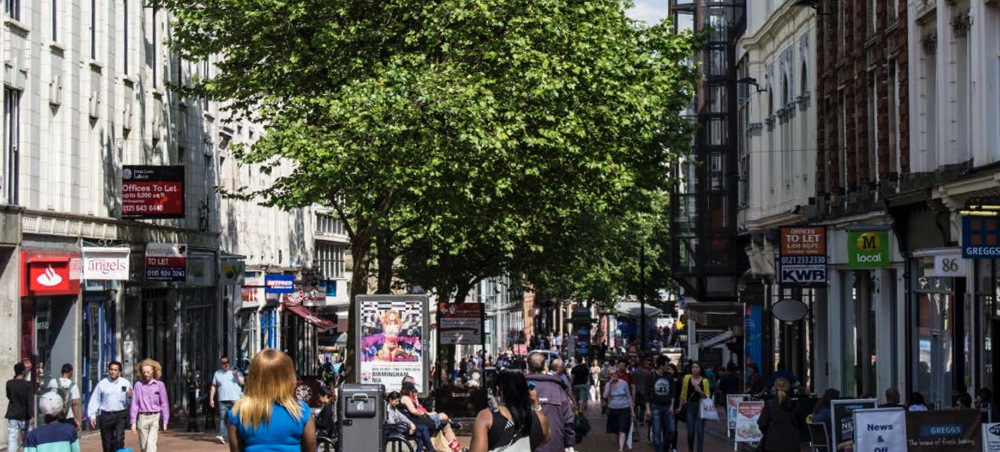High street health: converting a building for healthcare uses
In November 2024, the controversial Darzi Report in its recommendations for the future of the NHS, stated that, “Too great a share [of NHS funding] is being spent in hospitals, too little in the community,” and emphasised the importance of locating healthcare facilities on the high street – closer to where people live, work, and shop.
In the same month, the Built Environment Committee of the House of Lords published ‘High Streets: Life beyond retail’. The report recognised that people wish to have a mix of provisions on the high street, which may include public services such as health services. As well as boosting NHS capacity and meeting the needs of local communities, the report says, health centres could act as new “anchor” sites for high streets and bring in more people to the local high street.
The benefits of locating healthcare services in town centres and high streets has been widely recognised for many years. The reasoning was conveyed very comprehensively in a 2020 report by the NHS Confederation, ‘Health on the High Street’.
The same year the then government added greater flexibility to the planning system, introducing the new planning use class, Class E, which encompasses commercial, business and service (including healthcare) sectors. As such, Class E enables the repurposing of buildings on high streets and town centres from retail or office use to use as a GP surgery or community health hub without the need for planning consent.
Adapting commercial spaces as healthcare facilities offers several practical benefits: typically, these are large units with high ceilings which enable the installation of the necessary mechanical and electrical systems, such as´ventilation, air conditioning, and air quality controls. Reuse over rebuild has numerous sustainability and economic benefits.
The potential for change opens new and timely opportunities, linking to a nationwide rethink of the UK’s high streets and the role that health services and communities can play.
It is a win-win situation: from a healthcare point of view, the move to high street premises can help address health inequalities while offering much- needed additional capacity for health service delivery. From a regeneration perspective, encouraging a more diverse group of people to visit and use high streets can be of considerable benefit to existing businesses. Furthermore, placing healthcare services in central areas can reduce carbon emissions by reducing the need to travel to distant hospitals.
When converting a building, there are a number of considerations that must be taken into account from an architectural perspective.
The first is to ensure there is adequate access to natural light, as commercial buildings often have deep floorplans with windows only on the narrow elevations. The existing availability of daylight can be improved by installation of rooflights or new windows. But there is a limit to how much of this can be done under permitted development rights, as any external changes to an existing building are subject to an additional planning application. It is therefore more cost effective to select buildings that have sufficiently sized and orientated windows on most or all elevations.
The quality of the existing building fabric, in terms of thermal and sound performance, must also be considered. Thermal insulation, either by retrofit or upgrading the existing fabric, is almost always required to meet current building regulations. Single pane windows and single skin buildings will usually require more work to meet current performance thresholds, although some older buildings make good conversions if they are of good build quality. Upgrading an existing building’s thermal performance can be demanding because older buildings often have crooked walls and are prone to air leakage, so therefore not best suited for high thermal performance.
Sound insulation is also difficult to improve without significant alterations to an existing building. Replacing windows, for instance, will be subject to a further planning application and will likely be required to meet current building regulations and provide a comfortable space for healthcare uses. An alternative can be secondary glazing; however, the cost and user convenience must be considered.
Another consideration is that windows of commercial buildings are likely to be the sole means of ventilation in a conversion. If it is impractical to keep windows open, for instance if the building is public facing with no or little separation from public realm: there may be little or no ventilation. If this is the case, it may be best to submit an additional planning application to enable increased ventilation, either passively through more windows or through additional mechanical systems.
Landscaping can provide external amenity space, which is not easily found with existing commercial buildings: an opportunity to utilise a commercial building with external spaces would almost certainly be of benefit, albeit the maintenance aspect must be considered in advance.
Privacy is also a key consideration for buildings of healthcare use. Patients and healthcare professionals will not want to feel exposed to either external onlookers or other building users. Commercial buildings often do not make provision for providing levels of privacy required for healthcare use. This should therefore be considered as significant external amendments will likely be required.
Of course, where existing buildings fall short of potential for conversion under change of use, this can be compensated for by the submission of further planning applications. While change of use is an easier route for a simple conversion, we should not dismiss planning applications on the basis of being needlessly complicated, as a more comprehensive conversion can create a more valuable end product and help achieve greater opportunities for natural light, ventilation, amenity space and security. If there are too many constraints, such as contamination or a poor existing structure, then it may well be better to demolish and rebuild.
Another potential, albeit more short-term, use of high street properties is high street rental auctions, which were introduced in December 2024 as part of the previous government’s Levelling-up and Regeneration Act. The initiative exists to give local authorities (in England only) the power to force landlords to let their long-term vacant properties for community use. Essentially a form of compulsory rental (as opposed to compulsory purchase), this will mean that properties that have been vacant for more than 12 months in a 24-month period may be let through auction by local authorities. Importantly for the NHS, the original consultation on this policy proposed that the preferred tenant may not be the one who is willing to pay the most for the spot, but rather the one that brings greater variety to the high street.
Considering that places blighted by long-term vacancy tend to be those where low incomes and high unemployment are rife (Manchester and Luton were cited as examples in the consultation), there are clear benefits – as discussed earlier – in utilising such buildings for healthcare.
Whether through new build development, conversion, or simply the short-term use of a retail unit, the opportunities for healthcare services to relocate to high street settings are considerable and well worth further consideration, both on a national and a local level.
This article appears in the AT Journal Spring 2025 issue 153 as "Hight street health: converting a building for healthcare uses" and was written by Nigel Booen, Director of Design, Boyer (part of Leaders Romans Group).
--CIAT
[edit] Related articles on Designing Buildings
- Business Improvement Districts.
- Business rates.
- Change of use.
- Cities Devolution Bill.
- City centre.
- City deals.
- Commons Committee report on High Street support addresses evidence submitted by IHBC.
- Converting office and retail to residential housing on the high street.
- Daylight benefits in healthcare buildings.
- Edge of centre.
- Emergency healthcare architecture in Brazil.
- Enterprise zone.
- Going for growth, Reviewing the Effectiveness of Government Growth Initiatives.
- Growth and Infrastructure Bill.
- High street.
- High street (planning and policy)
- High streets heritage action zones.
- Hot water safety in health and social care settings.
- Inclusivity in the design of healthcare buildings.
- Instrumentation for critical healthcare environments.
- Local Development Orders.
- Local Enterprise Partnerships.
- Local plan.
- Main town centre uses.
- Permitted development.
- Permitted development: The end of the high street or a blessing in disguise?
- Portas review.
- Post pandemic places report.
- Out of town.
- Shopping centre.
- Street.
- Streetscape.
- Street hierarchy.
- Temporary modular accommodation for healthcare centres.
- The town's time has come.
- The future of healthcare construction may be modular.
- Town centre definition.
- Wood and healthcare buildings.
Featured articles and news
Zero carbon social housing: unlocking brownfield potential
Seven ZEDpod strategies for brownfield housing success.
CIOB report; a blueprint for SDGs and the built environment
Pairing the Sustainable Development Goals with projects.
Latest Build UK Building Safety Regime explainer published
Key elements in one short, now updated document.
UKGBC launch the UK Climate Resilience Roadmap
First guidance of its kind on direct climate impacts for the built environment and how it can adapt.
CLC Health, Safety and Wellbeing Strategy 2025
Launched by the Minister for Industry to look at fatalities on site, improving mental health and other issues.
One of the most impressive Victorian architects. Book review.
Common Assessment Standard now with building safety
New CAS update now includes mandatory building safety questions.
RTPI leader to become new CIOB Chief Executive Officer
Dr Victoria Hills MRTPI, FICE to take over after Caroline Gumble’s departure.
Social and affordable housing, a long term plan for delivery
The “Delivering a Decade of Renewal for Social and Affordable Housing” strategy sets out future path.
A change to adoptive architecture
Effects of global weather warming on architectural detailing, material choice and human interaction.
The proposed publicly owned and backed subsidiary of Homes England, to facilitate new homes.
How big is the problem and what can we do to mitigate the effects?
Overheating guidance and tools for building designers
A number of cool guides to help with the heat.
The UK's Modern Industrial Strategy: A 10 year plan
Previous consultation criticism, current key elements and general support with some persisting reservations.
Building Safety Regulator reforms
New roles, new staff and a new fast track service pave the way for a single construction regulator.
Architectural Technologist CPDs and Communications
CIAT CPD… and how you can do it!
Cooling centres and cool spaces
Managing extreme heat in cities by directing the public to places for heat stress relief and water sources.
Winter gardens: A brief history and warm variations
Extending the season with glass in different forms and terms.
Restoring Great Yarmouth's Winter Gardens
Transforming one of the least sustainable constructions imaginable.



























